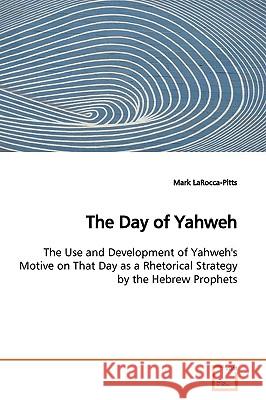The Day of Yahweh » książka
The Day of Yahweh
ISBN-13: 9783639149401 / Angielski / Miękka / 2009 / 364 str.
Understanding the Day of Yahweh lies in its use and development and not in its origin. The prophets employed the Day of Yahweh as a rhetorical strategy to address specific situations. Using Kenneth Burke, especially his pentadic analysis, we trace the development of motive on the Day of Yahweh from before the fall of Jerusalem, through its fall and the exilic period, and into the post-exilic period. We see that pre 587 BCE prophecies differ radically than post 587 BCE ones and that the Day of Yahweh as "the day Yahweh acts" fails to capture Yahwehs motive on that day. The "origin studies" ignored this development because they focused on the prophecies as generic expressions of an inherited form rather than as individual expressions designed to address unique historical situations. Our analysis also demonstrates that as the social location of prophecy shifted from a stable one during pre-exilic times to an unstable one in the post-exilic period that a corresponding shift occurred in Yahwehs motive on the Day of Yahweh. It is also only in the post-exilic prophecies that the Day of Yahweh finds it full eschatological expression.











